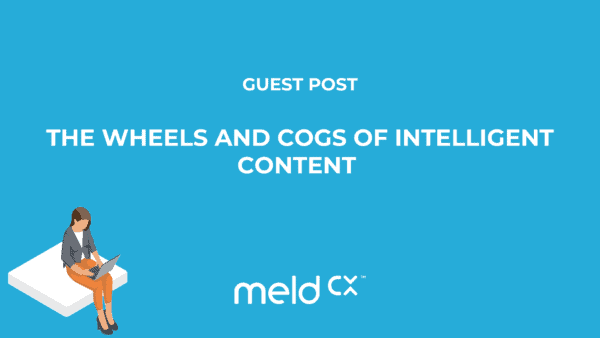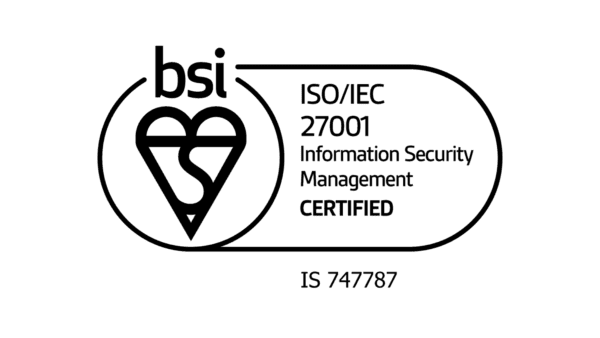The Wheels and Cogs of Intelligent Content
A valued partner of Signagelive, meldCX empowers businesses to create premier customer experiences through AI and intelligent-edge technologies.
meldCX, Executive Vice President of SaaS, Thor Turrecha, is the author of The Wheels and Cogs of Intelligent Content, the second article instalment of his Intelligent Content series, which we feature here as a guest post.
By definition, Intelligent Content is not the content itself. Rather, it is the way the content is structured so that it can be used efficiently and intelligently. You’re likely to have come across one or more examples of Intelligent Content; but it is one thing to read published content and another to create it.
So what goes into creating Intelligent Content?
1. Content Strategy
Before creating a library of well-researched, well-written content, map out your plan of how to reach out to your audience and engage them. Consider the who, what, when, where and how to serve as your guidelines for content creation. With this in mind, you can start creating content that is free of form or modular – standalone pieces that can be used independently.
2. Content Library
We are used to reading and writing content that follows a certain flow, be it for a brochure, a whitepaper document, a novel, etc. Intelligent Content, however, should be written in such a way that each piece can be used autonomously.
Create content that can stand the test of time.
Writing about a current trend may engage your readers today, but this content will no longer be relevant in a few months or even just a few weeks’ time. Evergreen content has a longer lifespan in terms of relevance, enabling you to maximise the content by adapting, reusing and reconfiguring it.
When creating your library, keep in mind the following structure, so you can optimise your content:
-
Structurally Rich
While the content as a whole does not follow a specific form, the independent pieces of content is modular and follows a predictable structure, enabling each part to be used, reused or reconfigured to maximum efficiency. This allows the content to be used automatically across multiple platforms, channels, devices and contexts.
-
Semantically Aware
Each module is tagged with metadata and industry-relevant keywords. This gives the structure meaning based on the content. It also optimizes your Content Management System with easier referencing and automation of producing new content.
3. Process
Implementing Intelligent Content involves a process that is unique to your organisation’s needs. Ask yourself what are your requirements, what is your communication strategy and how will you support this strategy with the content you created?
Based on Ann Rockley’s definition of Intelligent Content, here are some characteristics to help establish your process:
-
Discoverable
Tagging metadata and industry-related keywords ensures proper documentation and easier retrieval within your Content Management System. The rich metadata can also facilitate with Search Engine Optimisation and help you make your content searchable and automatically discoverable.
-
Adaptable
We frequently create content for a particular use or audience. However, we can also use this content differently to meet a new need. Like, for instance, an e-commerce site that sells high-tech gadgets. The photos and product descriptions are used on the website. When Father’s Day or Christmas season comes around, you can produce an article about the best gift ideas for dad or email customers thoughtful gift ideas for dad using the same photos and product descriptions.
-
Reusable
With evergreen content, you can reuse your content all year round. By reusing it, the need to create new material is reduced and you can ensure consistency throughout the content you do put out. This is particularly helpful to standard texts such as basic information, disclaimers, warning labels, and such, but is not limited to just these. Reusing content also helps cut down the process of translation.
-
Reconfigurable
Since it is modular, the different pieces of content can be used to adapt to the communication requirements of various platforms for publishing, for example reusing online content for offline digital signage campaigns. The structure of the content allows it to be mixed and matched, letting you create new content every so often.
4. Technology
While the technical aspect can seem overwhelming, Intelligent Content makes smart use of technology, including Artificial Intelligence and Machine Learning.
Through the integration of vision AI solution, meldCX Viana with digital signage content management system (CMS), Signagelive, you can, for instance, personalise the customer or visitor experience. With the help of web triggers, Signagelive is able to launch customised content for display every time Viana AI-enabled cameras recognise customers and visitors, who match the pre-defined characteristics of target personas.
To understand what content works best, at what time and for which kind of persona, you just need to access your audience analytics and proof of play reports from the Signagelive platform. Based on this data, you can then switch to the kind of content that works best for your customer personas.
AI-driven technology can also help to move away from continual human involvement and towards automation and a more advanced publishing process. (No more copy and paste every time you publish material with recurring content.)
Authoring tools enable you to catalogue your library for efficient retrieval and reuse of data or content. An optimised Content Management System streamlines the generation of the different types of content required. Content generation and publishing can be automated by AI, which is geared towards your process and requirements.
The application of Intelligent Content makes efficient use of people, processes, and technology.
This promotes a strategic approach to creating and managing content as a business asset and allows content creators to spend more time innovating instead of re-writing or recreating the same content for different channels.






